




OUR BEST EVER OFFER - SAVE £100/$100
JOIN THE WORLD'S LEADING PROFESSIONAL DEVELOPMENT PROGRAMME
- 12 months membership of Elite Soccer
- Print copy of Elite Player & Coach Development
- Print copy of The Training Ground
You are viewing 1 of your 1 free articles
Balancing the back four
This session is about the back four working as a unit. It looks for them to clear the ball past a target when dealing with a range of deliveries from different areas of the pitch.
| Area | Half pitch |
| Equipment | Balls, bibs, cones, goal |
| No. of Players | 10 plus keeper |
| Session Time | One hour |
This session is about the back four working as a unit. It looks for them to clear the ball past a target when dealing with a range of deliveries from different areas of the pitch.
It’s important to practise this because in the last 10-15 minutes of close games, opposition teams looking for a goal will launch the ball into the box. A strong defensive unit needs to be able to deal with this threat.
Defenders are often tired by this point too, so practising good technique is essential in clearing the danger properly, particularly as bad clearances often instigate further waves of attack.
In one of my first games in charge at Coventry City we conceded a late 94th-minute goal to Preston North End. That goal cost us a vital point. In response, we practised the principles outlined in this session, and went on to record clean sheets against Watford, Portsmouth and Reading.
What do I get the players to do?
Using a half pitch, we construct the back four, with six servers (number 1 to 6) scattered around the outside of the box in a horseshoe pattern. Each server stands in a 7x7-yard square. A line of mannequins is placed 10 yards outside the penalty box. (1a)
1a
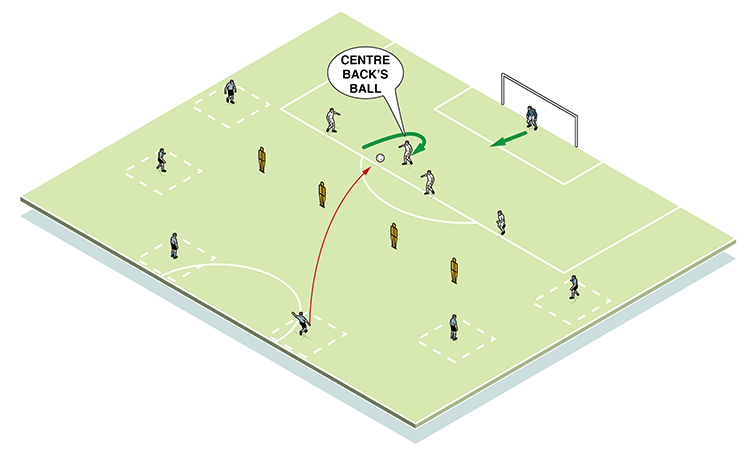
Each server, in turn, delivers a ball into the box, with variation between lofted balls, whipped balls and fizzed centres. The objective for defenders is to head the ball clear over the line of mannequins, achieving height and distance. They then quickly squeeze out before retreating back to their starting positions. We run through 12 sets in quick succession before resting. (1b)
1b
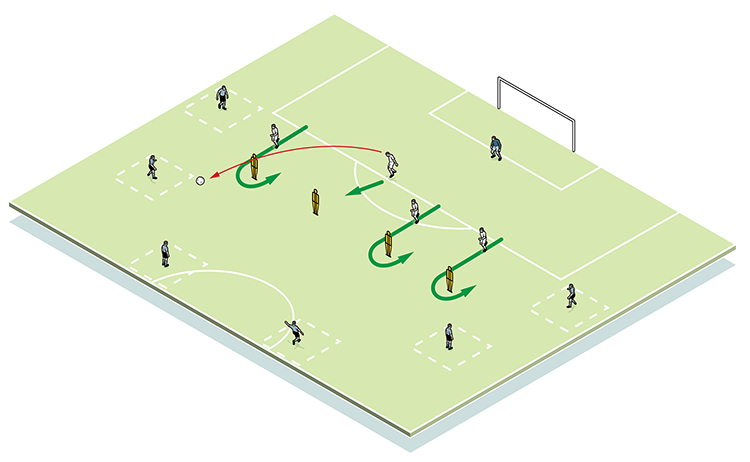
What are the key things to look for technically/tactically?
Each defensive tactic is held together by one important element - communication.
As for specific instructions, the only player allowed to backpedal to head the ball is the full-back.
If a cross is delivered over the first centre-half, we are looking for his fellow centre-half to judge the flight, offer a shout, and attack it.(2) This ensures the ball is always attacked on the front foot, which means clearances have power, direction and control.
2

When a ball is delivered from wide positions, defenders should be starting in line with it. Assuming a block isn’t made by him, the cross will often clear the first full-back because he has gone to press the ball. The other three defenders must therefore deal with the cross. Again, no-one should backpedal. If the ball goes over the first centre-back’s head, he requires a shout from the second defender or opposite full-back. (3a)
3a
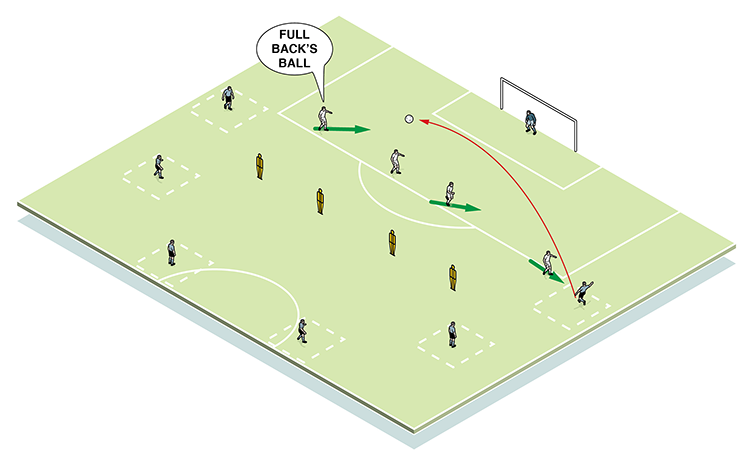
And clearing headers should not be downwards because in matches this invites opposition players to attack a low bouncing loose ball. (3b)
3b
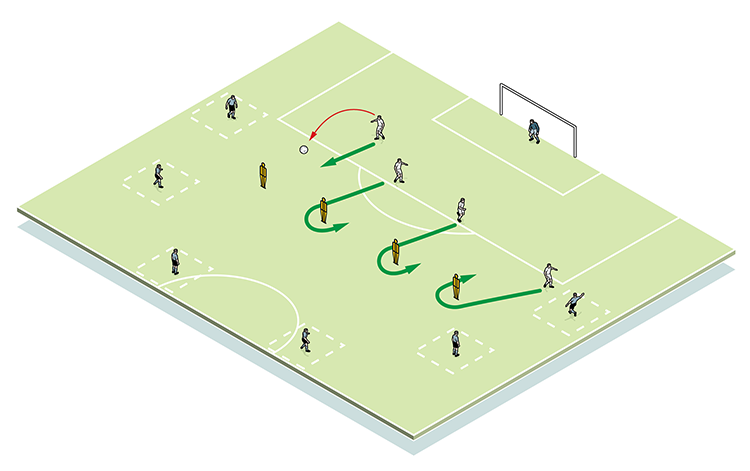
How do I progress the session?
We instruct crosses out of sequence so that defenders have to regroup quickly. Replace the mannequins with attackers so that any misplaced clearances can be fired back at goal.
As a final progression, we allow the attackers to challenge for crosses so as to make the practice as game-realistic as possible. (4)
4
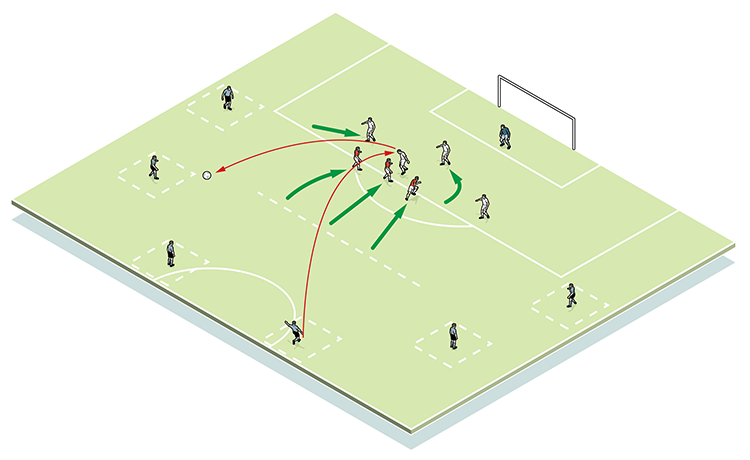
Related Files
Editor's Picks
Attacking transitions
Deep runs in the final third
Using the goalkeeper in build-up play
Intensive boxes drill with goals
Penetrating the final third
Creating and finishing
My philosophy
Pressing initiation
Compact team movement
Coaches' Testimonials

Alan Pardew

Arsène Wenger

Brendan Rodgers

Carlos Carvalhal

José Mourinho

Jürgen Klopp

Pep Guardiola

Roy Hodgson

Sir Alex Ferguson

Steven Gerrard
Related
Coaches' Testimonials

Gerald Kearney, Downtown Las Vegas Soccer Club

Paul Butler, Florida, USA

Rick Shields, Springboro, USA

Tony Green, Pierrefonds Titans, Quebec, Canada
Join the world's leading coaches and managers and discover for yourself one of the best kept secrets in coaching. No other training tool on the planet is written or read by the calibre of names you’ll find in Elite Soccer.
In a recent survey 92% of subscribers said Elite Soccer makes them more confident, 89% said it makes them a more effective coach and 91% said it makes them more inspired.
Get Monthly Inspiration
All the latest techniques and approaches
Since 2010 Elite Soccer has given subscribers exclusive insight into the training ground practices of the world’s best coaches. Published in partnership with the League Managers Association we have unparalleled access to the leading lights in the English leagues, as well as a host of international managers.
Elite Soccer exclusively features sessions written by the coaches themselves. There are no observed sessions and no sessions “in the style of”, just first-hand advice delivered direct to you from the coach.






